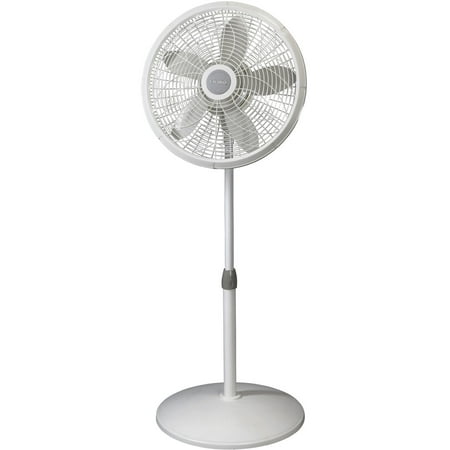Lasko 18″ 3-Speed Oscillating Adjustable Elegance & Performance Pedestal Fan with Timer, Model 1820, White
Enjoy a cool breeze in every room with the 18-inch Adjustable Elegance & Performance Pedestal Fan by Lasko. It is great for use in stores, offices, classrooms, health clubs, homes and more. The generous 18-inch diameter blade provides a comforting flow of cooling air that is adjustable to three quiet, energy-efficient speeds.With its 90° oscillating and flexible, tilt-adjustable fan head, you can set this pedestal fan to blow the air for a wide coverage, creating air circulation throughout the room with a gentle breeze that doesn’t necessarily blast you in the face. The fully-adjustable height enables you to adjust it for any member of the family. The elegant grill design and the white color blends into surrounding decor easily. This fan is easy to assemble, and even comes with a 1-year limited warranty. Enjoy style and performance of an elegant and powerful fan with the 18″ Adjustable Elegance & Performance Pedestal Fan by Lasko.Lasko has been engineering and building great-looking, high performance home comfort products in the U.S. and around the world for more than 100 years. The company has grown to an international organization and market leader in portable fans and ceramic heaters including room fans, high velocity fans, ceramic, low-profile heaters and many more.










Lasko 18″ Adjustable Elegance & Performance Pedestal 3-Speed Fan, Model 1820, White:Powerfully cools the largest home spacesElegant grill design blends into surrounding decorThree quiet, energy-efficient speedsOscillation and adjustable tilt-back to direct air where neededFully adjustable height (38″ to 54.5″) for added versatilitySimple assembly and cleaningIncludes a patented, fused safety plugETL listed for product safetyMeasures 20.5″L x 20.5″W x 54.5″H1 year limited warrantyCord length: 72 inches





Reviews
There are no reviews yet.